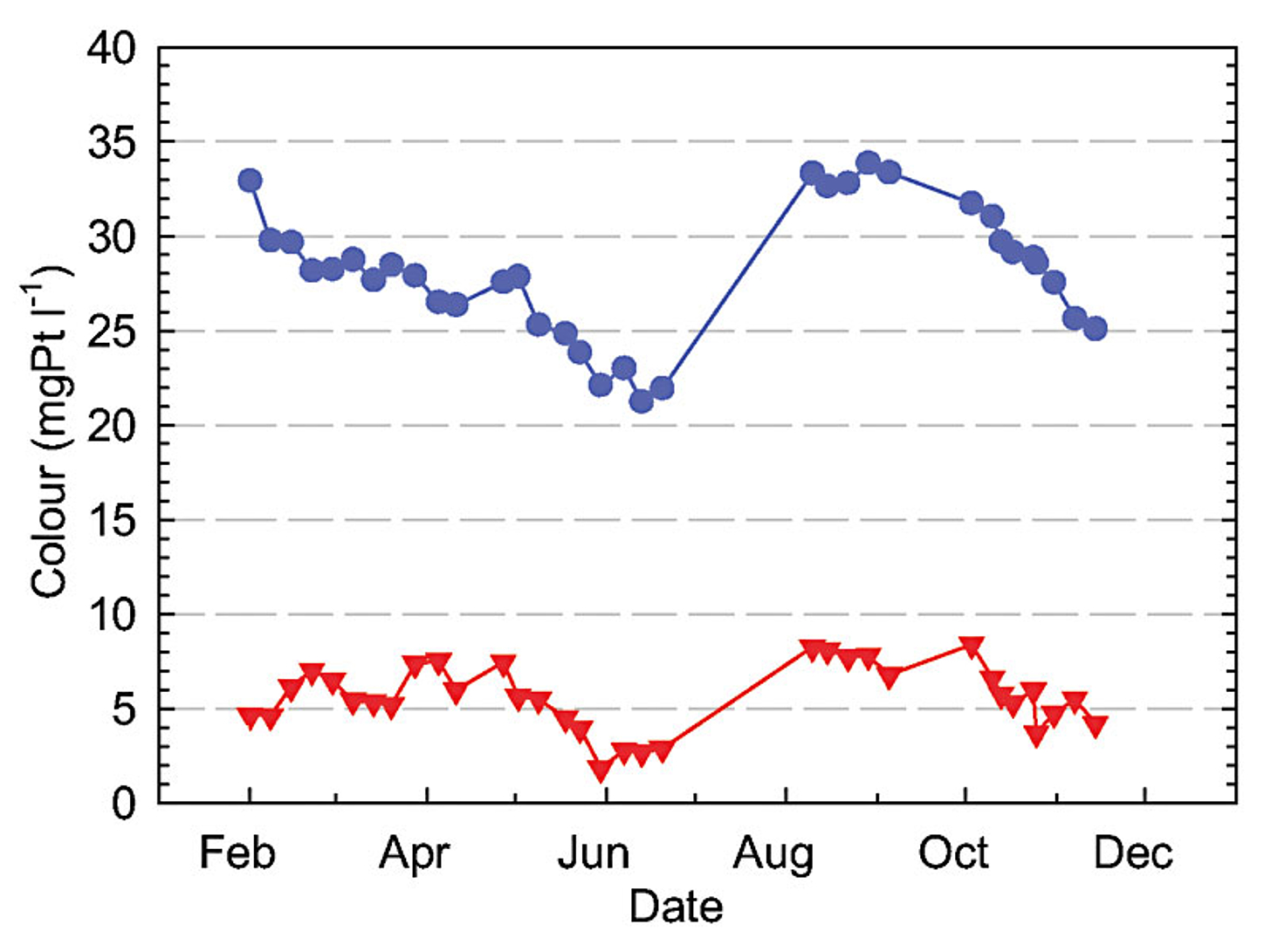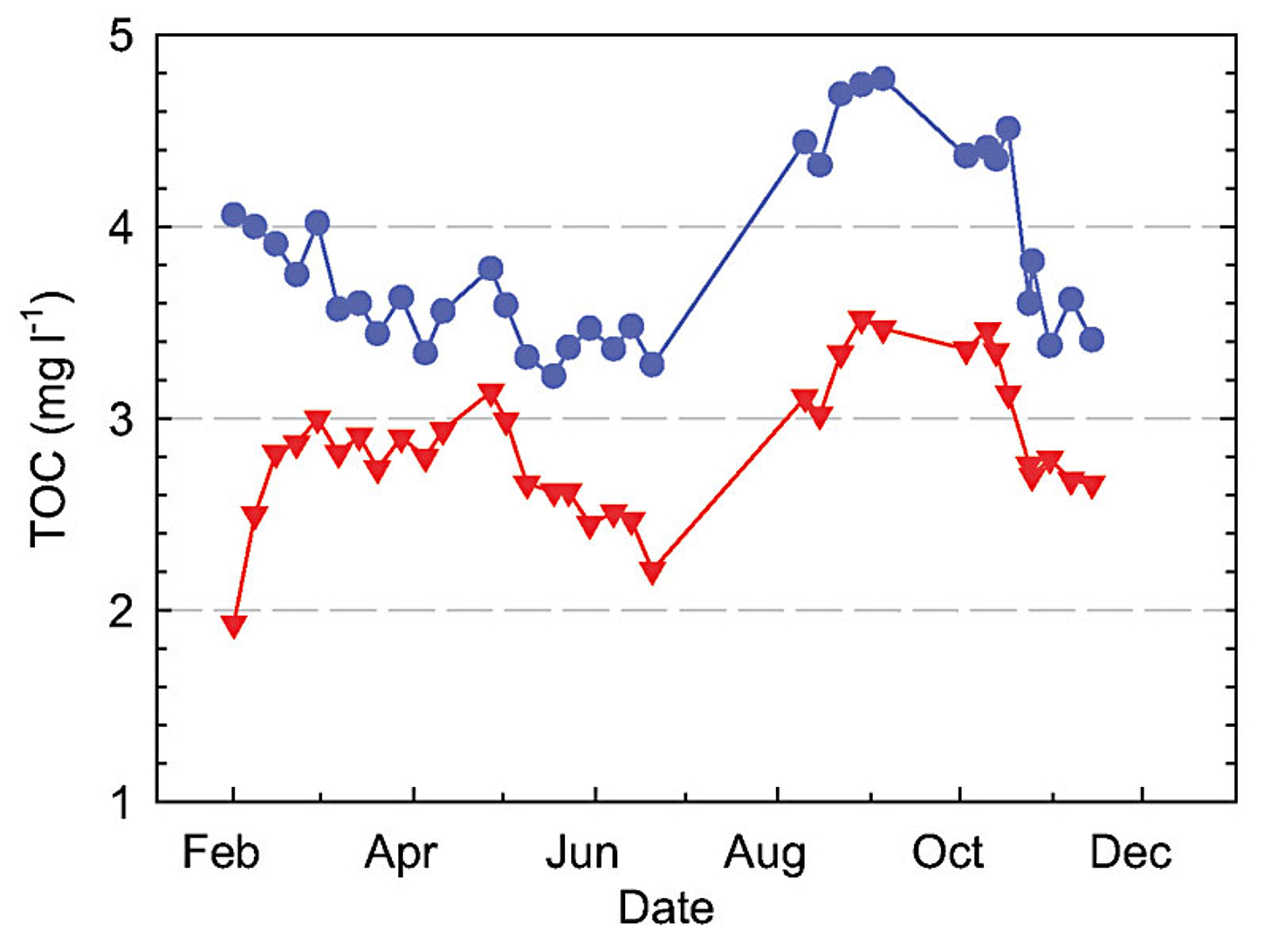Ozone bio-filtration
The natural organic matter (NOM) content is significant if the water is to be used for the drinking water supply. The NOM concentration is recorded analytically as the sum of the Dissolved Organic Carbon (DOC). The DOC is also responsible for the colour of the water. Water with increased DOC contents should not be used for a drinking water supply without water treatment. Even supposedly stable water can tend to become heavily contaminated after oxidative water treatment (e.g. dosing of disinfectants). In addition to the DOC, the colour of the water is also a relevant parameter for dimensioning a treatment system.
Ozone bio-filtration
Ozone bio-filtration is a tried-and-tested method based on the mechanisms of action in nature for the treatment of water containing humic substances. Under the influence of ozone as a strong oxidizing agent, the organic carbon compounds with a high molecular weight are split and the concentrations of the compounds with a low molecular weight are increased. Some of the compounds created in this way are biologically available and can be broken down through biological processes in the subsequent (bio) filtration stage.
Discolouration
The colouration of the water depends on the DOC of the water, but does not correlate with it. For example, water with a low DOC can show a high colouration, while water with a high DOC can also have a comparatively low colouration. Ozoning breaks up the colouring substances and reduces the colour of the water by 80 to 95%. The discolouration takes place very quickly and is directly dependent on the ozone dose.
DOC reduction
Part of the dissolved carbon is transformed into biodegradable compounds by ozoning. The biological degradation takes place in the ozone-free environment of the downstream filter stage, which is also referred to as mineralization. DOC removal rates of up to 35% are possible, depending on the water and boundary conditions such as dwell time etc. The configuration of an ozone bio-filtration system requires a lot of experience. For this reason, generally applicable data cannot be given here. Ozone doses can be up to 10 g/m³, usual filter velocity are up to 7.5 m/h.
The particular advantage of this process is the high level of environmental friendliness, since unlike with nanofiltration systems and reverse osmosis, virtually no environmentally harmful substances must be used.
However, neither can the process be used for all water, and it may have to be treated in two stages.
We would be happy to assist you in designing a system. In addition to the specification of the hydraulic values, a complete water analysis is essential for the project planning. A question sheet checklist is available in the download area.
Further information is available on request or can be found in the specialist reports on drinking water treatment in the Media Centre.



